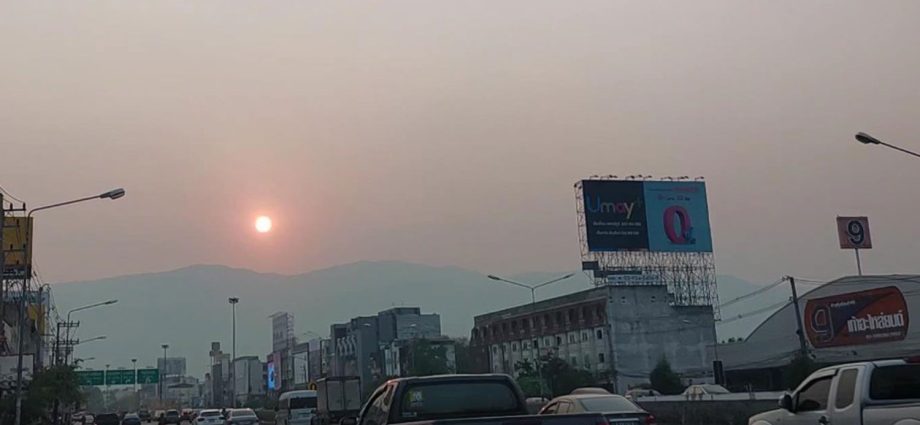Many forest fire hotspots on steep slopes in hard-to-reach areas of North

Chiang Mai had the world’s worst air pollution again on Tuesday morning, with an air quality index (AQI) of 180, according to the air-pollution monitoring website IQAir.
Forest fires and agricultural burning continued to be the main causes of the extremely unhealthy air, officials said.
Hotspots were mostly found in forests on steep slopes that are difficult to reach in Fang, Phrao and Chiang Dao districts, where officials have been deployed to contain the situation, said Chatchawan Panya, deputy governor of the northern province.
He provided the update after chairing a meeting on tackling wildfire smoke and PM2.5 pollution with representatives from district offices.
Mr Chatchawan called on all agencies to intensify efforts to prevent illegal burning in forests and stay vigilant. He also thanked every agency and volunteers for their efforts in suppressing wildfires this month.
The Northern Meteorological Centre has forecast rainfall is possible on April 23 and 24 as a cold air mass moves in, if artificial cloud-seeding efforts are successful.
Meanwhile, more hotspots are being detected in the northern region, according to the website of the Geo-Informatics and Space Technology Development Agency (Gistda). It said Suomi NPP satellite images on Monday showed 1,274 hotspots across the country.
The agency reported 539 fires in forest reserves, 479 in national forest park areas, 141 in agricultural areas, 69 in Sor Por Kor agricultural land areas, 43 in communities and other areas and three along highways.
Chiang Mai recorded the most hotspots at 272, followed by Chiang Rai (265) and Mae Hong Son (197).
Myanmar has the most hotspots among Thailand’s neighbours at 4,489, followed by Laos with 1,673, Vietnam with 319, Cambodia with 28 and Malaysia with 17, according to Gistda.
After analysing fire-prone forest areas over more than 12 million rai from April 17-23, the agency warned the northern provinces of Chiang Mai, Tak, Mae Hong Son, Lampang, Phetchabun and Nan, as well as other provinces such as Nakhon Sawan about burning activities.
Prime Minister Prayut Chan-o-cha has also urged the relevant agencies to cooperate with their peers in neighbouring countries to find a solution and enforce laws against violators. Every agency should also plant more trees across the country, he said.
In the South, many parts of Betong, the southernmost district in the border province of Yala, were shrouded in thick haze on Monday, prompting complaints of eye irritation and respiratory problems.
Local officials urged the public to wear face mask, while visibility was down and motorists were told to drive more carefully.
According to air pollution and health impact research station at Prince of Songkla University, average PM2.5 levels in the South have ranged from 50 to 55µg/m3 since Saturday.
The university’s Air Pollution Research Centre said the smog seen in the South was the result of a prevailing winds that carried smoke from some hotspots in Laos, Cambodia and Vietnam.

